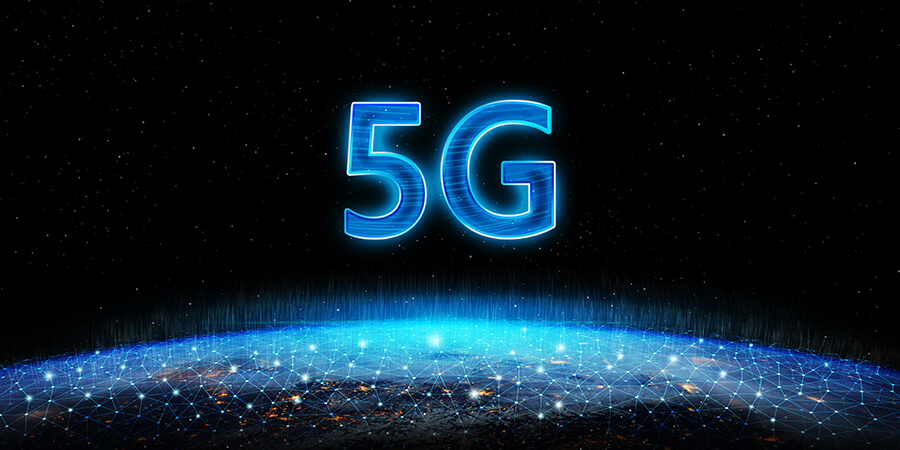In recent years, the global telecommunications industry has witnessed a remarkable transformation fueled by the advent of fifth generation (5G) technology. As 5G networks continue to expand worldwide, the demand for seamless connectivity and high-speed data transmission has skyrocketed.
In this rapidly evolving landscape, the roaming clearing market has emerged as a key player, facilitating the exchange of data between telecom operators, and ensuring a seamless roaming experience for customers around the globe. With the explosive growth in 5G data usage, the roaming clearing market is experiencing unprecedented expansion, revolutionizing the way international roaming is managed and paving the way for enhanced connectivity on a global scale.
Increased Demand for Roaming Services Amidst 5G Technology Adoption
The worldwide adoption of 5G technology has resulted in an increased demand for roaming services. As countries around the globe transition from 4G to 5G networks, users are experiencing faster data speeds, improved network capacity, and enhanced connectivity. This transformative technology has fueled the explosive growth in the roaming clearing market, which is responsible for managing and settling financial transactions between mobile network operators in different countries.
One of the main factors driving the increased demand for roaming services is the superior data speeds offered by 5G networks. With faster download and upload speeds, users can stream high-quality videos, participate in video conferences, and engage in real-time online gaming without experiencing significant lag or disruptions. This high-speed connectivity enables users to stay connected even while traveling, leading to a surge in demand for roaming services.
Moreover, the enhanced network capacity provided by 5G technology plays a vital role in the soaring demand for roaming services. The increased capacity allows an increase in simultaneous connections without sacrificing performance. This is particularly appealing to users who heavily rely on data-intensive applications and services, such as video streaming, cloud computing, and virtual reality. The ability to use these data-heavy services seamlessly while roaming has contributed to the upward trend in demand for roaming services.
As the demand for roaming services continues to rise, the roaming clearing market is experiencing significant growth. This market ensures that the necessary infrastructure and processes required are implemented to ensure that financial transactions between mobile network operators are accurately tracked, recorded, and settled. The utilization of 5G networks in roaming services necessitates efficient and reliable roaming clearing solutions to handle the increased volume of data and transactions.
The faster data speeds and enhanced network capacity offered by 5G networks have revolutionized the way users stay connected while traveling. As a result, the roaming clearing market is experiencing explosive growth: increasing the need for efficient and reliable solutions to handle the higher volume of transactions generated by global 5G data roaming.
Empowering Land Clearing Practices
The advent of 5G technology has revolutionized various industries, and one of the sectors benefiting significantly is land clearing. With its lightning-fast speeds and enhanced connectivity, 5G has paved the way for the utilization of cutting-edge technologies in land clearing practices. Among these innovations, drones equipped with high-resolution cameras and advanced imaging systems have emerged as powerful tools, empowering professionals in the landscape management industry.
Enhanced Mapping and Surveying Abilities
Traditional methods of mapping and surveying land can be time-consuming and labor-intensive. However, 5G-enabled drones equipped with high-resolution cameras and advanced imaging systems have transformed this process. These agile aerial devices swiftly navigate through landscapes, capturing detailed images and data. With this technology, a comprehensive understanding of the terrain, vegetation density, and potential hazards can be obtained more efficiently and accurately than ever before.
Real-Time Monitoring and Analysis
Real-time monitoring plays a crucial role in land clearing projects; ensuring safety, efficiency, and optimal resource allocation. 5G technology enables seamless communication between drones and project teams, allowing for immediate analysis and decision-making. High-resolution images and data captured by drones can be transmitted instantaneously, enabling professionals to identify any problem areas promptly. This real-time collaboration promotes faster response times, improved coordination, and ultimately enhances overall project management.
Precision and Safety
With the assistance of 5G-powered drones, land clearing professionals can achieve unmatched precision and safety in their operations. Equipped with advanced imaging systems, drones can detect potential hazards (such as diseased or unstable trees) with unprecedented accuracy. This allows proactive measures to be taken: mitigating risks and ensuring the safety of workers and surrounding environments.
Improved Efficiency and Cost-Effectiveness
By leveraging 5G technology and advanced drones, land clearing practices become more efficient, resulting in significant cost savings. The rapid data transfer capabilities of 5G ensure that project managers receive up-to-date information to make informed decisions promptly. This streamlined workflow minimizes delays, reduces errors, and optimizes resource allocation, ultimately increasing operational efficiency and reducing project costs.
The convergence of 5G technology and advanced drones has ushered in a new era of landscape management, empowering professionals with unparalleled capabilities. 5G-enabled drones have become essential tools in the land clearing industry due to their advanced mapping and surveying capabilities, real-time monitoring and analysis features, heightened precision and safety measures, as well as improved overall efficiency and cost-effectiveness. Embracing these innovations will create a landscape management future that is efficient, sustainable, and technologically advanced.
